
Adventure day tour to the Whale valley, Magic lake, Pottery village by Jeep
1 day
Instant confirmation
About this activity
Itinerary
This is a typical itinerary for this product
Stop At: Valley of the Whales (Wadi Al-Hitan), Western Desert, Giza Egypt
Whale Valley is a paleontological site in the Faiyum Governorate of Egypt, some 150 km southwest of Cairo.[1] It was designated a UNESCO World Heritage Site[2] in July 2005[3] for its hundreds of fossils of some of the earliest forms of whale, the archaeologist (a now extinct sub-order of whales). The site reveals evidence for the explanation of one of the greatest mysteries of the evolution of whales: the emergence of the whale as an ocean-going mammal from a previous life as a land-based animal. No other place in the world yields the number, concentration and quality of such fossils, as is their accessibility and setting in an attractive and protected landscape.[4] This is why it was added by the UNESCO to the list of protected World Heritage sites.
The fossils found at the site may not be the oldest but their great concentration in the area and the degree of their preservation is to the extent that even some stomach contents are intact. The presence of fossils of other early animals such as sharks, crocodiles, saw fish, turtles and rays found at Wadi El-Hitan ( it is name in arabic ) makes it possible to reconstruct the surrounding environmental and ecological conditions of the time, adding to its justification to be cited as a Heritage site.
The first fossil skeletons of whales were discovered in the winter of 1902-3. For the next 80 years they attracted relatively little interest, largely due to the difficulty of reaching the area.
at 1980 interest in the site resumed as four wheel drive vehicles became more readily available. Continuing interest coincided with the site being visited by fossil collectors, and many bones were removed, prompting calls for the site to be conserved. The remains display the typical streamlined body form of modern whales, yet retaining some of the primitive aspects of skull and tooth structure. The largest skeleton found reached up to 21 m in length,[6] with well-developed five-fingered flippers on the forelimbs and the unexpected presence of hind legs, feet, and toes, not known previously in anywhere else, Their form was serpentine and they were carnivorous. A few of these skeletal remains are exposed but most are shallowly buried in sediments, slowly uncovered by erosion. Wadi El-Hitan provides evidences of millions of years of coastal marine life.
Duration: 3 hours
Stop At: Wadi El-Rayan, 65 km southwest of Faiyum city 80 km west of the Nile River, Al Fayyum Egypt
Located less than two hours away from Cairo, Wadi El Rayan is one of Egypt’s most famous nature reserves. Named after King El Rayan Ibn El Walid who had lived in the area with his army, the nature reserve is part of El Fayoum governnate and located 40km away from El Fayoum itself.
The Wadi El Rayan reserve consists of seven parts; the (loosely
translated) upper and lower oases, El Rayan Oasis, El Rayan Falls, El Modawara Mountain (or Jabal El Modawara in Arabic), El Rayan Mountain (Jabal El Rayan) and Wadi El Hitan (The Valley of the Whales). All these areas are full of amazing landscapes such as oases, mountains, rock formations and waterfalls.
Egyptian wildlife can also be seen in the area including white gazelles,Egyptian gazelles, sand foxes and fennec foxes, as well as rare species of resident birds, migrant birds and various kinds of eagles and falcons.
The area is also a major attraction to archaeologists due to the volume of marine fossils and archaeological remains found in there. Wadi El Hitan is named after the pre-historic whale fossils discovered in the area, which are considered to be the earliest whale fossils ever found and earned the valley.
its position on the UNESCO list of protected World Heritage sites.
El Rayan’s waterfalls are about 20km away from the reserve’s gate on the left side of the road (of which nearly two kilometres are unpaved). The waterfalls are beautiful but the unfortunate lack of attention by authorities makes them look worn out.
Only five kilometres away, Jabal El Modawara is the definition of beauty, When you climb this amazing mountain– which
isn’t too bad to climb by the way– the view from above will easily take your breath away. It’s also a great spot for bird-watching, especially if you plan on catching a glimpse of eagles or falcons.
Venturing further past Jabal El Modawara, adventurers may take a right and drive east for 30km on a dirt road to Wadi El Hitan.
Arriving in Wadi Hitan itself is quite an experience. Although
the visitor centre is built as a Bedouin-style building; it does feel a little disorienting to come across it after 30km of off-road hiking. As you venture past that, you are literally taking a walk through history as every turn in the.
path set out in the valley reveals another set of fossils belonging to
pre-historic monoliths of the sea. Unfortunately, many of the remains were only partially fossilized but you still get a feeling of the sheer size of these animals.
Duration: 2 hours
Read more
Show less
This is a typical itinerary for this product
Stop At: Valley of the Whales (Wadi Al-Hitan), Western Desert, Giza Egypt
Whale Valley is a paleontological site in the Faiyum Governorate of Egypt, some 150 km southwest of Cairo.[1] It was designated a UNESCO World Heritage Site[2] in July 2005[3] for its hundreds of fossils of some of the earliest forms of whale, the archaeologist (a now extinct sub-order of whales). The site reveals evidence for the explanation of one of the greatest mysteries of the evolution of whales: the emergence of the whale as an ocean-going mammal from a previous life as a land-based animal. No other place in the world yields the number, concentration and quality of such fossils, as is their accessibility and setting in an attractive and protected landscape.[4] This is why it was added by the UNESCO to the list of protected World Heritage sites.
The fossils found at the site may not be the oldest but their great concentration in the area and the degree of their preservation is to the extent that even some stomach contents are intact. The presence of fossils of other early animals such as sharks, crocodiles, saw fish, turtles and rays found at Wadi El-Hitan ( it is name in arabic ) makes it possible to reconstruct the surrounding environmental and ecological conditions of the time, adding to its justification to be cited as a Heritage site.
The first fossil skeletons of whales were discovered in the winter of 1902-3. For the next 80 years they attracted relatively little interest, largely due to the difficulty of reaching the area.
at 1980 interest in the site resumed as four wheel drive vehicles became more readily available. Continuing interest coincided with the site being visited by fossil collectors, and many bones were removed, prompting calls for the site to be conserved. The remains display the typical streamlined body form of modern whales, yet retaining some of the primitive aspects of skull and tooth structure. The largest skeleton found reached up to 21 m in length,[6] with well-developed five-fingered flippers on the forelimbs and the unexpected presence of hind legs, feet, and toes, not known previously in anywhere else, Their form was serpentine and they were carnivorous. A few of these skeletal remains are exposed but most are shallowly buried in sediments, slowly uncovered by erosion. Wadi El-Hitan provides evidences of millions of years of coastal marine life.
Duration: 3 hours
Stop At: Wadi El-Rayan, 65 km southwest of Faiyum city 80 km west of the Nile River, Al Fayyum Egypt
Located less than two hours away from Cairo, Wadi El Rayan is one of Egypt’s most famous nature reserves. Named after King El Rayan Ibn El Walid who had lived in the area with his army, the nature reserve is part of El Fayoum governnate and located 40km away from El Fayoum itself.
The Wadi El Rayan reserve consists of seven parts; the (loosely
translated) upper and lower oases, El Rayan Oasis, El Rayan Falls, El Modawara Mountain (or Jabal El Modawara in Arabic), El Rayan Mountain (Jabal El Rayan) and Wadi El Hitan (The Valley of the Whales). All these areas are full of amazing landscapes such as oases, mountains, rock formations and waterfalls.
Egyptian wildlife can also be seen in the area including white gazelles,Egyptian gazelles, sand foxes and fennec foxes, as well as rare species of resident birds, migrant birds and various kinds of eagles and falcons.
The area is also a major attraction to archaeologists due to the volume of marine fossils and archaeological remains found in there. Wadi El Hitan is named after the pre-historic whale fossils discovered in the area, which are considered to be the earliest whale fossils ever found and earned the valley.
its position on the UNESCO list of protected World Heritage sites.
El Rayan’s waterfalls are about 20km away from the reserve’s gate on the left side of the road (of which nearly two kilometres are unpaved). The waterfalls are beautiful but the unfortunate lack of attention by authorities makes them look worn out.
Only five kilometres away, Jabal El Modawara is the definition of beauty, When you climb this amazing mountain– which
isn’t too bad to climb by the way– the view from above will easily take your breath away. It’s also a great spot for bird-watching, especially if you plan on catching a glimpse of eagles or falcons.
Venturing further past Jabal El Modawara, adventurers may take a right and drive east for 30km on a dirt road to Wadi El Hitan.
Arriving in Wadi Hitan itself is quite an experience. Although
the visitor centre is built as a Bedouin-style building; it does feel a little disorienting to come across it after 30km of off-road hiking. As you venture past that, you are literally taking a walk through history as every turn in the.
path set out in the valley reveals another set of fossils belonging to
pre-historic monoliths of the sea. Unfortunately, many of the remains were only partially fossilized but you still get a feeling of the sheer size of these animals.
Duration: 2 hours
Included
- Private transportation
- Air-conditioned vehicle
- Lunch
- Bottled water
- WiFi on board
- Professional tour guide
- Snacks
- Free visit to pottery workshop
- pick up / drop off
- Entry/Admission - Valley of the Whales (Wadi Al-Hitan)
- Entry/Admission - Wadi El-Rayan
Not included
- Gratuities
- personal spending
- Any extra
Additional
- Confirmation will be received at time of booking
- Not wheelchair accessible
- Infants must sit on laps
- Most travelers can participate
- This experience requires good weather. If it’s canceled due to poor weather, you’ll be offered a different date or a full refund
- This is a private tour/activity. Only your group will participate
Features
Tourism
90%
Cultural
65%
You may also like









 See all 19 Collections
See all 19 Collections
Click to discover other experiences
See all

Collections
Quad
13 Activities

Collections
Art & Culture
7 Activities
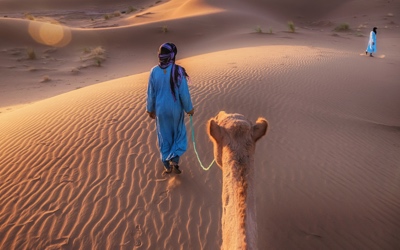
Collections
Camel Ride
23 Activities
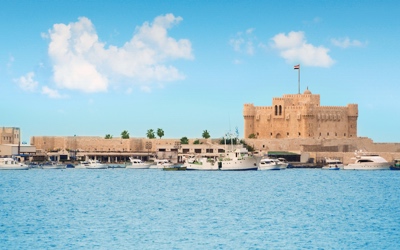
Collections
Alexandria Tour
8 Activities
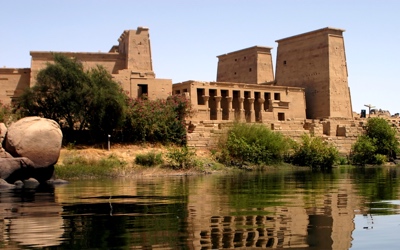
Collections
Other Trips
22 Activities
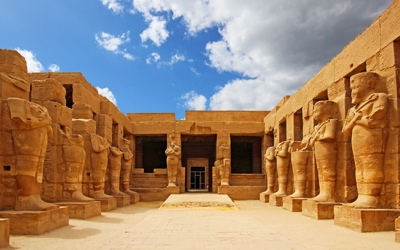
Collections
Luxor Trip
33 Activities

Collections
Snorkel & Dive
10 Activities
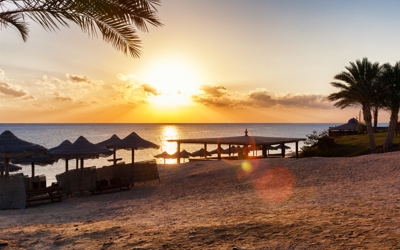
Collections
Marsa Alam Tour
45 Activities

Collections
Safari
10 Activities
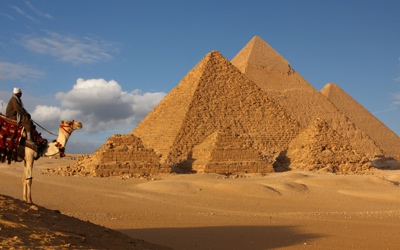
Collections
Giza Pyramids
65 Activities

